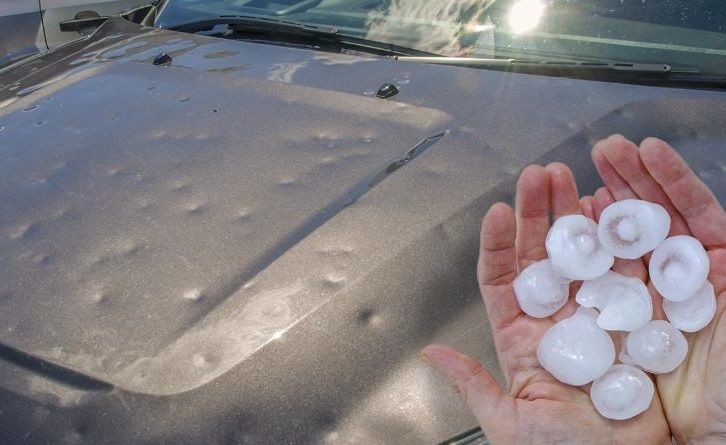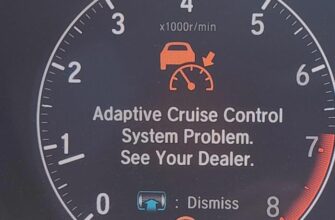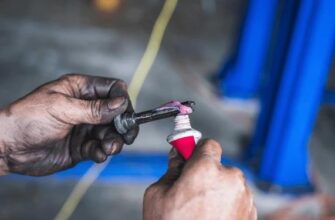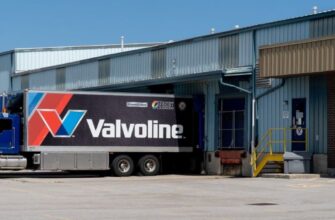Hail storms can leave cars with ugly dents and scratches that ruin the appearance and decrease the value. Repairing hail damage seems daunting, but with the right techniques and tools you can fix it yourself and save thousands over professional repairs. This guide will teach you everything you need to know to remove hail damage and get your car looking great again.

What Kind of Damage Can Hail Cause to a Car’s Exterior?
Hail can cause small dents and dings in the sheet metal, cracks in glass, pits and scratches in the paint and trim, and damage to plastic body parts. The size and severity depends on the hail stone size and wind speed. Small dings may be manageable, but larger hail can cause craters, creases, and holes that require body filler, panel replacement, and repainting.
How Much Does it Cost to Repair Hail Damage?
Professional hail repair costs $100 to $150 per dent, with additional charges for painting. Minor repairs often run $1000 to $2000, while severe storms with golf ball-sized hail can total a car. Comprehensive insurance often covers hail claims, but has a deductible. Doing it yourself saves tremendously over shops.
Can I Repair Hail Damage at Home Myself?
With patience and the right tools, small to medium hail damage is totally fixable at home. Removing dings, dents, and scratches requires specialized dent pullers, suction cups, dry ice, and body filler. Avoid attempting glass repair or structural damage. Touch up paint pens fix minor chips, but repainting requires an automotive paint sprayer.
What Tools Do I Need To Repair Hail Damage?
- Dent pullers – Adhesive pullers, slide hammers, suction cups
- Body hammers and dolly blocks – To gently reshape dented metal
- Sandpaper – To smooth paint for touch ups
- Filler spreader – Apply body filler smoothly
- Paint touch up pens – Match your car’s color code
- Paint sprayer – For full repaints
- Pry bar – Remove trim for access
- Rubber mallet – Help free dents
- Dry ice – Shrink and pop out dents
How Can I Remove Small Hail Dents Myself?
For dings less than 1 inch, use a suction cup dent puller to pull the dent out by applying steady pressure. Heat the area first with a hair dryer to help the metal flex easier without cracking the paint. For deeper dents that won’t pull out, sand the area smooth and use thin coats of body filler, sanding between coats. Restore the paint with touch up paint pens.
What’s the Best Method for Removing Large Hail Dents?
Larger dents over 1 inch wide will need a slide hammer dent puller. First, drill holes in the center of the dent to attach the pulling screw. Heat the area to avoid cracking. Pull slowly straight out, working the metal back into shape. Use a body hammer and dolly blocks on curved panels. Fill holes and sand, then feather fill surrounding scratches and pits with filler.
Can I Use Dry Ice to Remove Hail Dents?
Dry ice can shrink and pop out small to medium dents. Cut blocks to fit over each dent and hold with pliers. The extreme cold makes the metal contract and push out the dent. Heat with a hair dryer before and after to avoid paint damage. Limit contact to avoid freezing paint. Dry ice works best on rounded, flexible panels.
How Do I Repair Hail Damage on the Roof?
The roof takes a beating in hailstorms. Use a rubber mallet to gently tap out dents before pulling. For deeper roof dents, drop a smaller piece of dry ice inside to push up from underneath while you pull with an adhesive cup. Filler and touch up paint disguise any remaining evidence.
What’s the Best Way to Remove Hail Scratches?
Fine scratches from hail impact can often be buffed and polished out using automotive polishing compound on a rotary buffer. Start with light polishing pads first. If scratches persist, use a more aggressive buffing pad. Follow with a finer polish to leave a smooth, glossy finish. Avoid burning through thin clear coat.
How Do I Repair Hail Damage on Plastic Bumpers?
Plastic bumpers and trim easily crack and gouge from hail. Carefully sand out small scratches and use a plastic filler. For cracks, remove the bumper cover and plastic weld from the inside for an invisible repair. Scuffed texture can be revived with textured spray paint. Replace severely damaged bumper covers.
Can I Repair Hail Damage to Car Glass?
Only minor chips on glass should be DIY. Deeper cracks require a windshield replacement. Use a razor to pick out loose glass from the impact point. Fill with clear epoxy resin. Cover with transparent tape until dry. Wide bullseye cracks cannot be repaired – the entire windshield will need professional replacement.
Is it Worth Repairing Hail Damage on an Older Car?
The value of your car and extent of damage determine whether repairing hail damage makes financial sense. Minor repairs on a newer vehicle are usually worth it. Heavy damage exceeding half the car’s value would likely total it. Weigh the cost of quality repairs versus living with dents and pocketing the insurance check on an older car.
Final Tips for Repairing Hail Damage
- Work slowly and gently to avoid cracking paint or warping panels
- Test products/techniques on hidden areas first
- Follow product directions closely for best results
- Wear protective gear – gloves, goggles, mask, etc
- Avoid attempting structural repairs or windshield glass
- Insurance can help pay professionals if too extensive
With patience and persistence, you can repair hail damage at a fraction of the cost of a body shop. Take your time and use the right tools to remove dents, buff out scratches, and touch up paint for a professional looking repair. Your car’s exterior will look pristine again after following this hail damage repair guide.
FAQ About Repairing Hail Damage
How can I tell if my car has hail damage? Carefully inspect your car in bright sunlight or under shop lights looking for small dents, pits in the paint, or cracks in glass and plastic parts. Running your hand over the car will help feel for subtle dents.
What size hail causes the worst car damage? Larger hail stones typically cause more severe dents. Hail 1 inch or larger in diameter can produce deep door and roof dents. Giant hail over 2 inches across can puncture metal panels and shatter glass.
What parts of a car are most vulnerable to hail? The roof, hood, and trunk lid take direct hits as hail rebounds off the ground. Fenders and door panels are also likely targets. Plastic trim and moldings easily crack. Side mirrors and sunroofs are at risk for glass damage.
Can I wait to get hail damage fixed? It’s best to repair hail damage promptly to prevent further rusting and paint degradation. Cover dents with touch up paint at minimum to seal out moisture. Bare metal will flash rust in days.
Will my car insurance go up if I file a hail damage claim? Filing a claim for hail damage will likely not raise your rates, especially if you have a zero deductible comprehensive policy. Insurance sees hail as unavoidable, not the policy holder’s fault.
Can I do hail damage repair myself or do I need a body shop? Small dings and paint chips can be addressed with DIY dent pullers, paint pens, and buffing. But extensive damage requires professional repainting, panel replacement, and windshield repair.
How much value does hail damage deduct from a car? Minor cosmetic hail damage reduces value 5-10%. Medium damage can deduct 20% or more. Severe unrepaired damage can total a car’s value. Properly fixed, the car will retain normal value.








